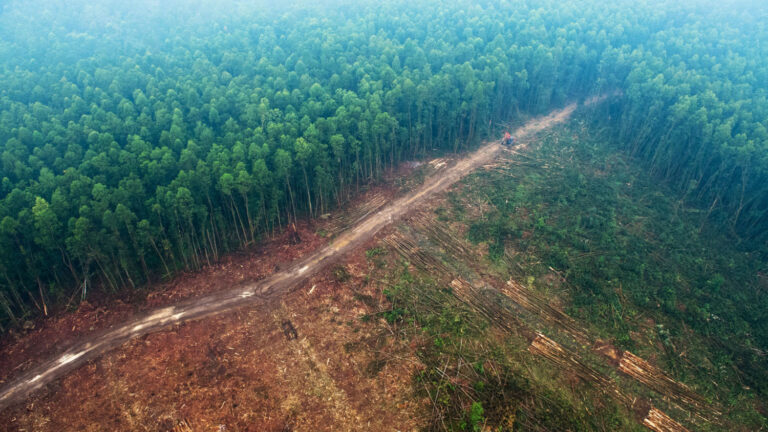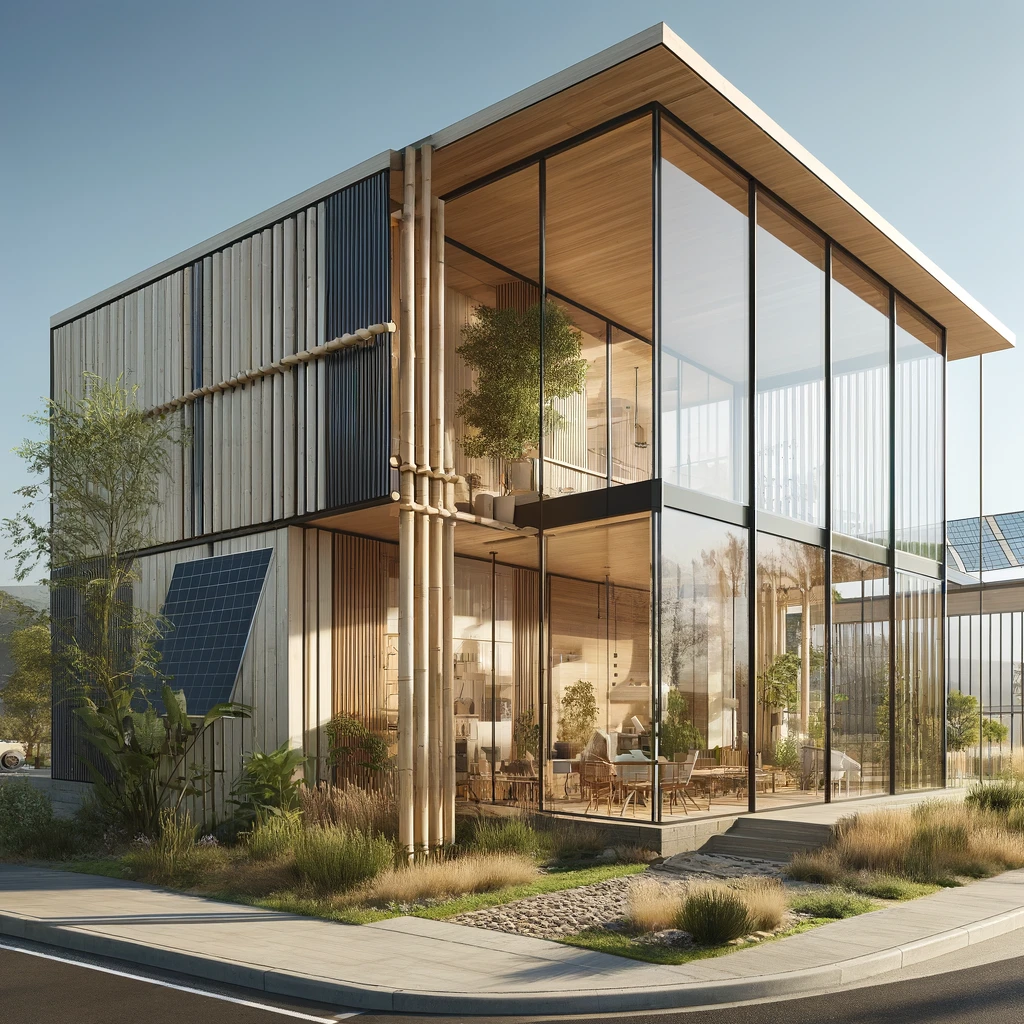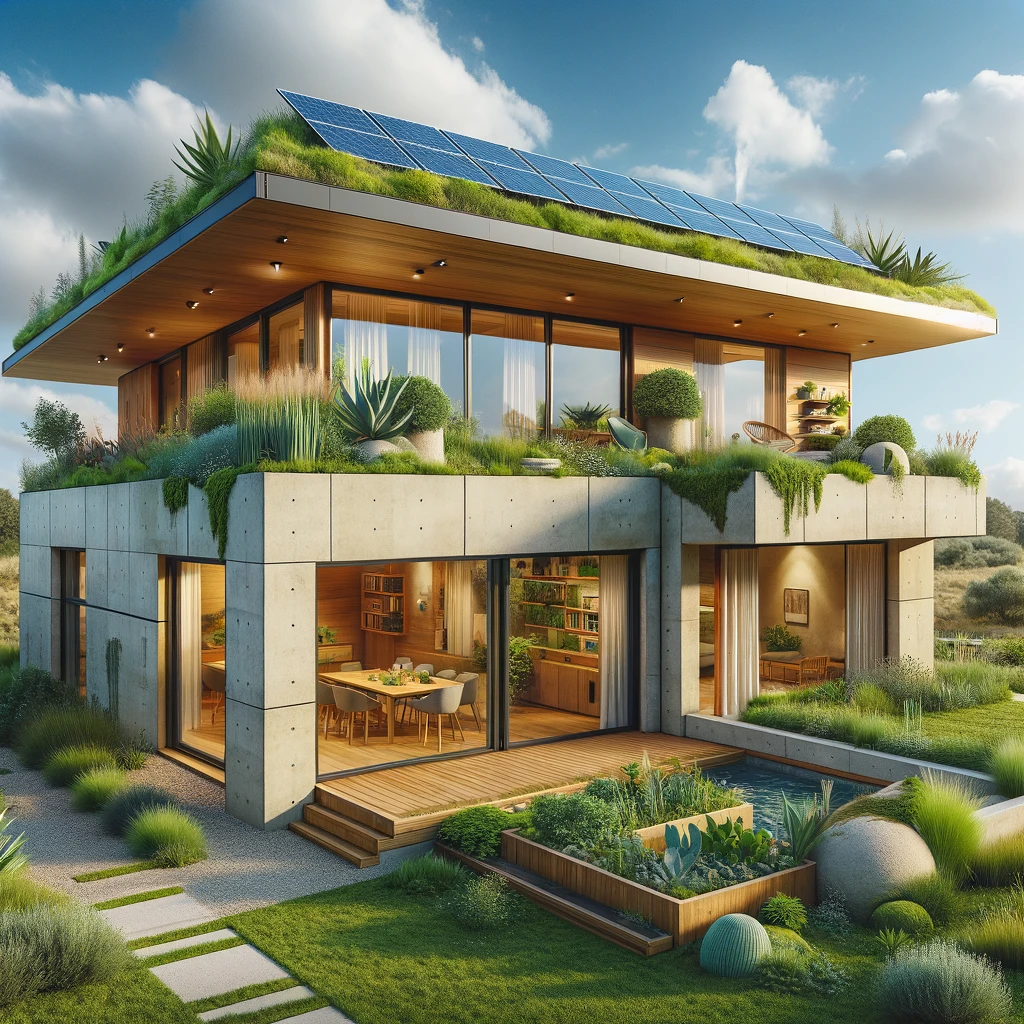The construction industry has long been associated with significant environmental impacts, from deforestation and habitat destruction to high carbon emissions and waste generation. As awareness of climate change and environmental degradation grows, there is a pressing need to adopt more sustainable practices in building and construction. Eco-conscious construction, which prioritizes the use of sustainable materials and methods, offers a viable solution to mitigate these adverse effects while creating healthier, more efficient, and aesthetically pleasing buildings.
In this blog post, we will explore the importance of eco-conscious construction and how it contributes to global sustainability efforts. We will delve into various sustainable building materials, including laminated bamboo lumber, MDF, PVC, and sustainably harvested wood, discussing their benefits and applications.
Additionally, we will highlight the challenges and solutions in adopting sustainable materials, and showcase how Coastal Custom Products can support your eco-friendly construction projects. Join us as we navigate the path towards a more sustainable future in construction.
The Importance of Eco-Conscious Construction

Traditional construction practices have been detrimental to the environment, contributing to deforestation, air and water pollution, and significant greenhouse gas emissions. The extraction and processing of conventional building materials such as concrete, steel, and unsustainably harvested wood consume vast amounts of energy and resources, leaving a substantial carbon footprint. Eco-conscious construction aims to reduce these negative impacts by integrating sustainable materials and practices that promote environmental stewardship.
Supporting global sustainability goals, eco-conscious construction aligns with initiatives such as the United Nations Sustainable Development Goals (SDGs), which emphasize responsible consumption and production, climate action, and sustainable cities and communities. Beyond environmental benefits, using sustainable materials in construction also enhances indoor air quality, reduces exposure to harmful chemicals, and promotes healthier living and working environments. By prioritizing sustainability in construction, we can create buildings that are not only eco-friendly but also beneficial for human health and well-being.
Overview of Sustainable Building Materials
Laminated Bamboo Lumber
Laminated bamboo lumber is an innovative and highly sustainable building material known for its exceptional strength, renewability, and aesthetic appeal. Bamboo grows rapidly, reaching maturity in just 3-5 years, making it a highly renewable resource compared to traditional hardwoods. The lamination process involves bonding multiple layers of bamboo together, resulting in a material that is stronger than many conventional woods.
Benefits
Strength and Durability
Comparable to or even exceeding the strength of hardwoods.
Renewability
Fast-growing and can be harvested sustainably without damaging ecosystems.
Carbon Sequestration
Absorbs more carbon dioxide than many other plants, helping to mitigate climate change.
Applications
Residential
Flooring, cabinetry, furniture, and structural components.
Commercial
Interior design elements, wall panels, and load-bearing structures.
MDF (Medium Density Fiberboard)
Medium Density Fiberboard (MDF) is an engineered wood product made from wood fibers, wax, and resin, which are compressed and heated to form dense, smooth panels. MDF is a sustainable choice because it utilizes wood waste and byproducts, reducing the need for virgin timber.
Benefits
Utilization of Wood Waste
Minimizes waste by repurposing wood fibers.
Low Emissions
Advances in technology have led to the production of low-emission MDF, reducing indoor air pollution.
Versatility
Can be easily cut, shaped, and painted, making it suitable for a wide range of applications.
Applications
Residential
Cabinetry, shelving, furniture, and moldings.
Commercial
Office furniture, display units, and wall paneling.
PVC (Polyvinyl Chloride)
Polyvinyl Chloride (PVC) is a versatile plastic material widely used in construction due to its durability, low maintenance, and recyclability. Modern advancements have improved the sustainability of PVC, making it a viable option for eco-conscious construction.
Benefits
Durability
Resistant to weathering, chemical rotting, corrosion, and abrasion.
Recyclability
Can be recycled multiple times without significant loss of performance.
Low Maintenance
Requires minimal upkeep, reducing long-term costs and environmental impact.
Applications
Residential
Window frames, doors, piping, and flooring.
Commercial
Signage, roofing membranes, and electrical conduits.
Sustainably Harvested Wood
Sustainably harvested wood is sourced from forests managed to preserve their biodiversity, productivity, and ecological processes. Certification systems like the Forest Stewardship Council (FSC) ensure that the wood is harvested in an environmentally responsible and socially beneficial manner.
Benefits
Preservation of Forests
Supports sustainable forestry practices that maintain forest health and biodiversity.
Certification Standards
Guarantees responsible sourcing and promotes consumer confidence.
Aesthetic and Functional Quality
Offers the beauty and versatility of natural wood with a reduced environmental footprint.
Applications
Residential
Structural framing, flooring, furniture, and decorative elements.
Commercial
Office interiors, retail spaces, and public buildings.
Benefits of Using Sustainable Materials in Construction
Environmental Benefits
Using sustainable materials in construction significantly reduces the carbon footprint of buildings. Sustainable materials often require less energy to produce and result in lower emissions during their lifecycle. They also help conserve natural resources by reducing the need for virgin materials and promoting the use of renewable resources.
Economic Benefits
While the initial cost of sustainable materials may be higher, they often lead to cost savings over time. Eco-friendly buildings are typically more energy-efficient, resulting in lower utility bills. Additionally, sustainable buildings often have higher property values and can differentiate themselves in the market, appealing to environmentally conscious consumers.
Social Benefits
Eco-conscious construction enhances community health and well-being by reducing exposure to toxic substances and improving indoor air quality. Sustainable materials also support ethical labor practices and contribute to the overall sustainability of the community. Buildings that use these materials often foster a sense of pride and responsibility among residents and users.
Challenges and Solutions in Adopting Sustainable Materials
Common Challenges
Higher Upfront Costs
Sustainable materials can be more expensive initially, which may deter some builders and developers.
Lack of Awareness or Expertise
Builders and architects may not be familiar with the benefits and applications of sustainable materials.
Limited Availability
Sustainable materials may not be readily available in all regions, complicating procurement and logistics.
Practical Solutions
Incentives and Subsidies
Governments and organizations can offer financial incentives and subsidies to offset the higher initial costs of sustainable materials.
Education and Training
Providing education and training for builders, architects, and developers can increase awareness and expertise in sustainable construction.
Partnerships with Suppliers
Building relationships with suppliers of sustainable materials can improve availability and reduce costs through bulk purchasing and logistical planning.
How Coastal Custom Products Can Help
Product Offerings
Coastal Custom Products offers a wide range of eco-friendly building materials, including laminated bamboo lumber, MDF, PVC, and sustainably harvested wood. Our products are carefully selected to meet high standards of sustainability, quality, and performance. We are committed to providing materials that contribute to healthier, more sustainable buildings.
Expertise and Support
Our team of experts is dedicated to supporting your eco-friendly construction projects. We offer consultation services to help you choose the right materials for your specific needs and provide guidance on best practices for sustainable construction. Our success stories and testimonials from satisfied clients demonstrate our commitment to quality and sustainability.
Conclusion
Incorporating sustainable materials into construction projects is a crucial step towards reducing environmental impact and promoting a healthier, more sustainable future. By choosing eco-friendly materials like laminated bamboo lumber, MDF, PVC, and sustainably harvested wood, builders and developers can create buildings that are not only beautiful and functional but also environmentally responsible.
Coastal Custom Products is here to support your journey towards eco-conscious construction, offering high-quality materials and expert guidance to help you achieve your sustainability goals.



